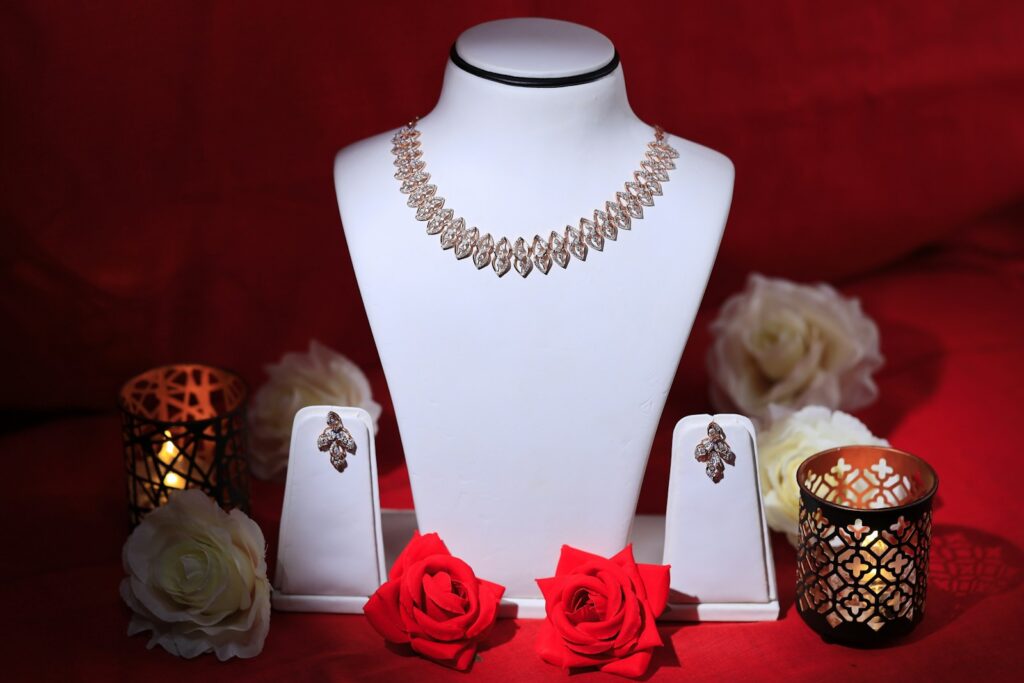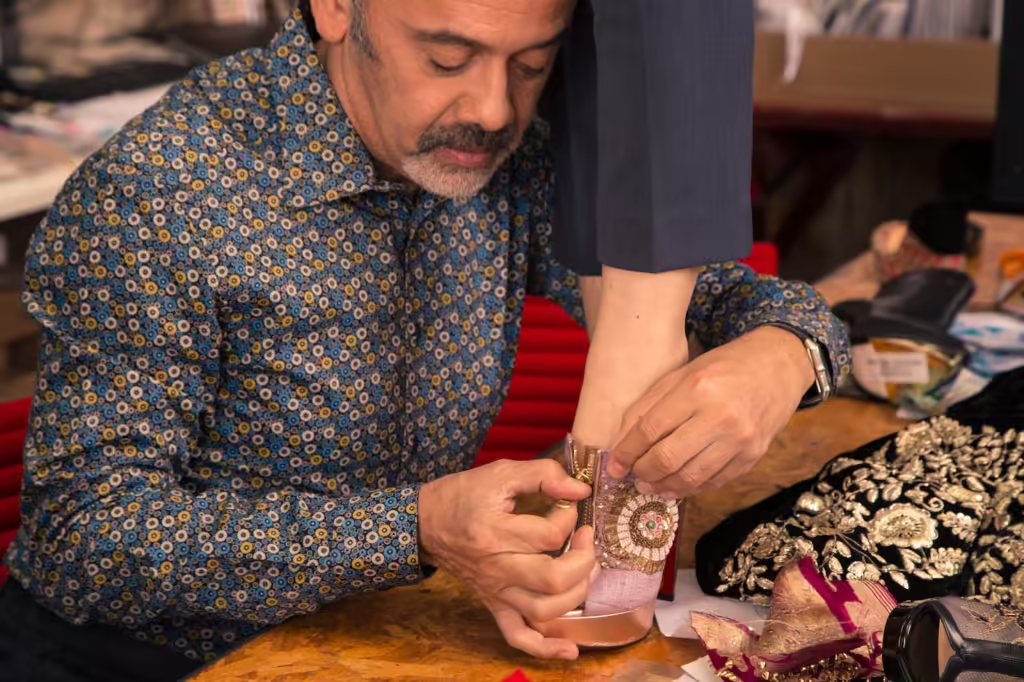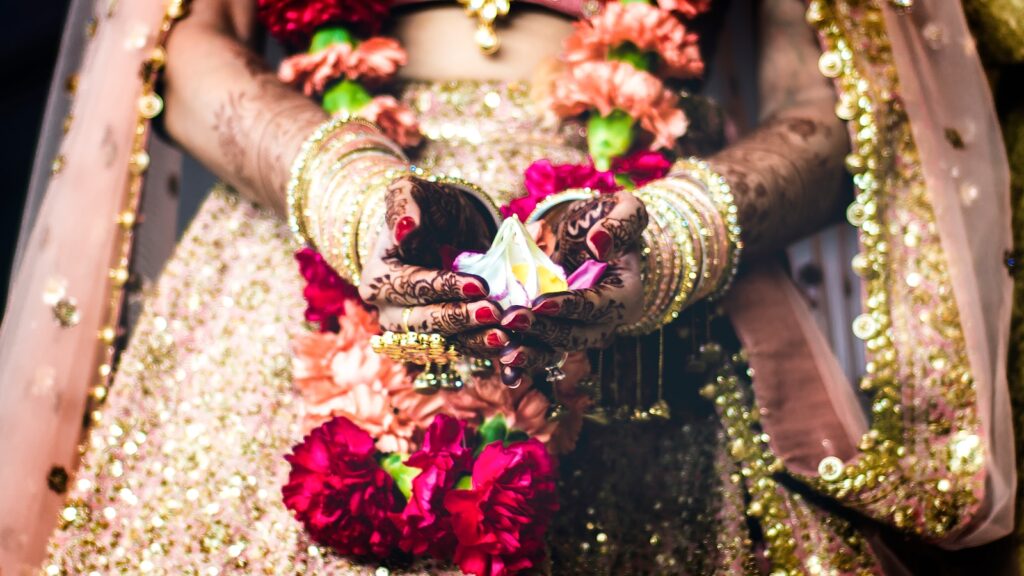17 September 2024
Key Insights into India’s Expansive $130 Billion Wedding Market
India boasts one of the world’s most extensive wedding markets, where luxury weddings typically cost between $240,000 and $360,000. The extended festivities of a typical Indian wedding, spanning several days and numerous pre-ceremony events, present vast opportunities for international brands.
Jewelry accounts for about 50-55% of wedding expenditures, with a notable shift towards international brands. The recent high-profile wedding of Anant Ambani, son of Asia’s wealthiest individual, Mukesh Ambani, to Radhika Merchant, has placed an unprecedented global spotlight on Indian weddings. This event, highlighted by celebrity performances and a guest list featuring billionaires and global icons adorned in lavish jewels and couture, underscored the significant business potential of Indian wedding traditions.
Valued at $130 billion, India’s wedding industry is nearly double the size of its American counterpart and a major player on the global stage, albeit still trailing behind China. With 8-10 million weddings annually, India is now the premier wedding destination globally.
The extravagant wedding of the Ambanis is exceptional, yet it reflects the common Indian ethos of sparing no expense for weddings, regardless of the couple’s economic standing. According to a report by Jefferies, even in a typically value-conscious society, Indians often spend on weddings well beyond their means, with luxury wedding expenses ranging from 20 million to 30 million rupees ($240,000 to $360,000), and often much higher.
Priya Tanna, president of The Right Side, a creative agency under Reliance Retail, notes that weddings are a deeply entrenched element of Indian culture, with a generational understanding of their importance. The cost is partly due to the multi-day nature of Indian weddings, which require multiple outfits, resulting in larger wardrobes compared to their Western counterparts.
The Indian wedding season, with its myriad pre-ceremony and post-ceremony celebrations, varies across the country’s diverse religious and cultural landscape. Key events typically include the roka (engagement), haldi (turmeric ceremony), mehendi (henna party), sangeet (traditional song and dance), and the main wedding and reception.
As the main wedding season approaches, global brands are keen to assess their performance in tapping into this complex, promising market.
Wedding Wardrobe Opportunities For both the couple and their guests, traditional attire remains preferred for key ceremonies. Women often choose lehengas, saris, shararas, and anarkalis, while men opt for sherwanis, bandhgalas, and kurta sets. This consistent preference offers significant sales opportunities for global fashion brands looking to make inroads into this lucrative sector.

The consistent preference for traditional attire at Indian weddings has been a significant revenue stream for local designers for decades. Esteemed designers like Sabyasachi, Abu Jani Sandeep Khosla, Anita Dongre, Manish Malhotra, and Tarun Tahiliani have been mainstays in the bridal wear scene. Additionally, a wave of emerging designers is making their mark, bringing fresh perspectives to traditional Indian crafts and silhouettes.
Anaita Shroff Adajania, one of India’s leading stylists, notes a shift in bridal fashion trends: “Modern Indian brides are making bold, individualistic choices. They seek attire that not only stands out but also narrates their personal story.” Designers are responding by focusing on mobility and comfort, crafting lehengas that are lighter yet maintain a lavish appearance. There’s also a resurgence in heritage crafts and a renewed interest in handwoven textiles.
This evolution in bridal preferences is influenced by a broader spectrum of inspirations, extending beyond Bollywood to include real brides on Instagram, international red carpets, and Hollywood celebrities. This diversification presents a golden opportunity for international luxury brands to integrate their offerings into the Indian wedding market, particularly at peripheral events such as bridal showers, welcome dinners, and cocktail parties. It’s crucial for these brands to also recognize that modern grooms sometimes opt for Western attire like suits and tuxedos at certain wedding functions.
Adajania remarks on the trend of incorporating Western fashion into traditional ceremonies: “What was once termed a ‘youngsters party’ has evolved significantly, allowing for more adventurous and varied wardrobe choices for the various festivities.”
Highlighting this trend, designer Masaba Gupta donned an Alaïa gown paired with traditional South Indian jewelry for her reception, while influencer Saanchi Gilani chose Western designers like Self-Portrait, Alexander McQueen, and Nadine Merabi for her destination wedding events.
Adajania concludes, “While the market for haute couture from international labels remains niche in India, there is a burgeoning demand for ready-to-wear collections, not only among the marrying couple but also among their families and guests.” This trend was evident at the numerous pre-wedding events of the Ambani family this summer, featuring an array of international brands including Versace, Roberto Cavalli, Giorgio Armani, Valentino, Ashi Studio, Dior, and Chanel.
This melding of traditional and international influences underscores the dynamic and evolving nature of India’s wedding fashion landscape, offering expansive opportunities for both established and novel designers.

Indian online retailer Ajio Luxe presented a large booth at the latest The Wedding Collective expo in Mumbai featuring dedicated products for the bridal shower, the bachelorette party and the honeymoon. (Ajio Luxe)
The landscape of Indian weddings is witnessing a significant shift with the rise of high-profile cross-cultural and mixed-faith unions. These couples are redefining traditional ceremonies by incorporating elements from various cultures, notably through the integration of Western wedding customs. A notable trend is the increasing number of Indian brides who choose to add a Western-style white gown event to their wedding festivities, a choice that reflects personal style over cultural tradition.
Fashion-forward couples and guests are also blending traditional Indian attire with international fashion brands, crafting a personalized approach to celebration wear that reflects global influences.
Exploring Collaborative Innovations
Collaborations between Indian and international designers represent a promising direction for evolving wedding fashion. An exemplary case is Radhika Merchant’s reception outfit, a unique creation by Indian couturier Anamika Khanna in collaboration with Italian luxury brand Dolce & Gabbana. The ensemble featured a corset from Dolce & Gabbana’s Alta Moda collection reimagined into a concept sari with a matching stole, highlighting the blend of traditional Indian attire with Italian haute couture.
Anamika Khanna remarks on the evolving Indian wedding scene, “Indian weddings are increasingly embracing new ideas and are not shy about experimenting. This openness provides a vast playground for international brands to engage with the Indian market in innovative ways.”
Despite the allure of Indo-Western styles, traditional attire continues to hold a revered place at Indian weddings. Over time, some international brands have ventured into this sphere with their interpretations. For instance, Canali introduced the ‘Nawab jacket’ in 2009, inspired by the traditional bandhgala to celebrate Indian nobility and weddings. Similarly, Atelier Versace crafted a custom lehenga for fashion influencer Sonam Babani’s wedding rehearsal dinner in Switzerland in 2022.
The Ambani weddings have consistently showcased a fusion of haute couture and traditional Indian elements, serving as a platform for unique collaborations that set trends in wedding fashion. A notable instance was Isha Ambani Piramal wearing a bespoke sari by Schiaparelli at her brother’s wedding, blending the iconic style of Schiaparelli with traditional Indian sari elements. Additionally, Shloka Ambani donned a custom ivory sari by couturier Tamara Ralph, highlighting the growing demand for Indian-inspired couture among international designers.
Tamara Ralph, discussing the integration of cultural elements into design, noted, “The collaborative process is essential in this market. It involves blending Indian cultural elements while maintaining a distinct design identity, often resulting in heavily embellished and intricate creations suited to the grandeur of Indian weddings.”
This trend extends beyond apparel to accessories. Tod’s recent collaboration with designer Rahul Mishra featured leather accessories adorned with Mishra’s detailed embroideries, and in 2017, Christian Louboutin partnered with Sabyasachi Mukherjee to create a line of footwear and accessories using archival sari fabrics, further emphasizing the successful integration of Indian aesthetics with global fashion trends.
The ongoing success of these collaborations in the accessories market underscores the potential for similar partnerships in apparel, advising global brands to consider collaborative ventures with Indian designers as a strategic approach to engaging with India’s dynamic wedding market.

In 2017 French designer Christian Louboutin and Sabyasachi Mukherjee collaborated on a line of footwear and accessories made from archival sari fabrics from the Indian couturier’s atelier. (Christian Louboutin)
Christian Louboutin, recognizing the unique demands of the Indian wedding market, launched a bespoke wedding suite at his Mumbai flagship store in 2014, and more recently, unveiled ‘The India Wedding Edit’—a capsule collection tailored for Indian weddings.
This focus on ‘India exclusives’ has become crucial for international brands aiming to capture the festive and wedding market segments in India. Limited edition releases, similar to those by Gucci, Jimmy Choo, and Dior, are now expected by industry watchers and serve as models for other brands looking to penetrate this lucrative market.
However, brands are encouraged to venture beyond the conventional, exploring beyond metallics and pinks to genuinely understand and cater to the nuanced preferences of Indian consumers. Thoughtful, well-timed launches that resonate with local tastes and traditions are key to making a lasting impact.
Expanding Opportunities for Jewellery Brands
Jewellery accounts for a significant portion of wedding spending in India, with about 50-55 percent of the budget dedicated to this category, according to a report by Jefferies. Not only is jewellery a staple in the bride’s trousseau, but it also plays a central role in wedding gifting traditions, given to the couple, parents-in-law, and, in luxury settings, as exclusive wedding favors to select guests.
While traditional heavy jewellery from family-owned and local jewellers predominates at weddings, there is a growing trend among modern brides and their families toward practicality and versatility. Many are now opting for jewellery pieces that not only enhance their wedding day attire but are also suitable for everyday wear, including items from well-known international brands.
This shift presents a significant opportunity for jewellery maisons to expand their offerings and presence in the Indian market, catering to a clientele that values both tradition and practicality.

Tod’s released a collaboration with designer Rahul Mishra in September 2024 for a line of leather accessories. (Tods x Rahul Mishra)
Christian Louboutin, recognizing the unique demands of the Indian wedding market, launched a bespoke wedding suite at his Mumbai flagship store in 2014, and more recently, unveiled ‘The India Wedding Edit’—a capsule collection tailored for Indian weddings.
This focus on ‘India exclusives’ has become crucial for international brands aiming to capture the festive and wedding market segments in India. Limited edition releases, similar to those by Gucci, Jimmy Choo, and Dior, are now expected by industry watchers and serve as models for other brands looking to penetrate this lucrative market.
However, brands are encouraged to venture beyond the conventional, exploring beyond metallics and pinks to genuinely understand and cater to the nuanced preferences of Indian consumers. Thoughtful, well-timed launches that resonate with local tastes and traditions are key to making a lasting impact.
Expanding Opportunities for Jewellery Brands
Jewellery accounts for a significant portion of wedding spending in India, with about 50-55 percent of the budget dedicated to this category, according to a report by Jefferies. Not only is jewellery a staple in the bride’s trousseau, but it also plays a central role in wedding gifting traditions, given to the couple, parents-in-law, and, in luxury settings, as exclusive wedding favors to select guests.
While traditional heavy jewellery from family-owned and local jewellers predominates at weddings, there is a growing trend among modern brides and their families toward practicality and versatility. Many are now opting for jewellery pieces that not only enhance their wedding day attire but are also suitable for everyday wear, including items from well-known international brands.
This shift presents a significant opportunity for jewellery maisons to expand their offerings and presence in the Indian market, catering to a clientele that values both tradition and practicality.

